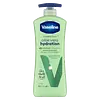What's inside
What's inside
 Benefits
Benefits

No benefits
 Concerns
Concerns

 Ingredients Side-by-side
Ingredients Side-by-side

Water
Skin ConditioningGlycerin
HumectantStearic Acid
CleansingGlycol Stearate
EmollientIsopropyl Palmitate
EmollientPetrolatum
EmollientAloe Barbadensis Leaf Juice Powder
Skin ConditioningTriethanolamine
BufferingGlyceryl Stearate
EmollientCetyl Alcohol
EmollientDimethicone
EmollientPhenoxyethanol
PreservativeTapioca Starch
Methylparaben
PreservativeCarbomer
Emulsion StabilisingParfum
MaskingPropylparaben
PreservativeDisodium EDTA
Stearamide Amp
Helianthus Annuus Seed Oil
EmollientBenzyl Alcohol
PerfumingHexyl Cinnamal
PerfumingLinalool
PerfumingCI 77891
Cosmetic ColorantWater, Glycerin, Stearic Acid, Glycol Stearate, Isopropyl Palmitate, Petrolatum, Aloe Barbadensis Leaf Juice Powder, Triethanolamine, Glyceryl Stearate, Cetyl Alcohol, Dimethicone, Phenoxyethanol, Tapioca Starch, Methylparaben, Carbomer, Parfum, Propylparaben, Disodium EDTA, Stearamide Amp, Helianthus Annuus Seed Oil, Benzyl Alcohol, Hexyl Cinnamal, Linalool, CI 77891
Ingredients Explained
These ingredients are found in both products.
Ingredients higher up in an ingredient list are typically present in a larger amount.
Carbomer is a polymer of acrylic acid. Its main role is to create a gel consistency.
A high amount of carbomer can cause pilling or balling up of products. Don't worry, most products contain 1% or less of carbomer.
Cetyl Alcohol is a fatty alcohol. Fatty Alcohols are most often used as an emollient or to thicken a product.
Its main roles are:
Though it has "alcohol" in the name, it is not related to denatured alcohol or ethyl alcohol.
The FDA allows products labeled "alcohol-free" to have fatty alcohols.
Learn more about Cetyl AlcoholGlyceryl Stearate is a mix of glycerin and stearic acid.
It is used to stabilize the mixing of water and oil ingredients. By preventing these ingredients from separating, it can help elongate shelf life. It can also help thicken the product's texture.
As an emollient, it helps soften skin and supports barrier-replenishing ingredients.
In cosmetics, Glyceryl Stearate is often made from vegetable oils or synthetically produced.
This ingredient may not be fungal-acne safe
Fun fact: The human body also creates Glyceryl Stearate naturally.
Learn more about Glyceryl StearatePropylparaben is a preservative and is a paraben with antifungal and antimicrobial properties.
This ingredient can be naturally found in plants and insects, but most of it is synthetically manufactured for human use. In cosmetics, it is usually created by reacting para-aminobenzoic acid and propanol (an alcohol).
You can usually find this ingredient in water-based products.
Parabens have come under controversy due to the claim they are hormone disruptors. Studies show conflicting results. We recommend speaking with a professional if you have any concerns.
Propylparaben is commonly found in food, medicine, and cosmetics.
Learn more about PropylparabenWater. It's the most common cosmetic ingredient of all. You'll usually see it at the top of ingredient lists, meaning that it makes up the largest part of the product.
So why is it so popular? Water most often acts as a solvent - this means that it helps dissolve other ingredients into the formulation.
You'll also recognize water as that liquid we all need to stay alive. If you see this, drink a glass of water. Stay hydrated!
Learn more about Water